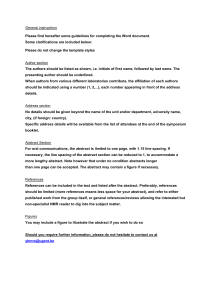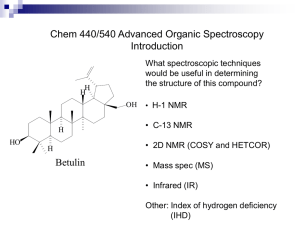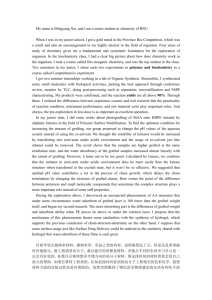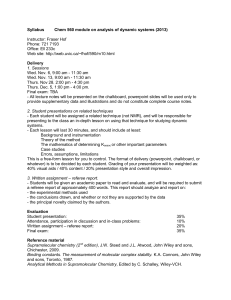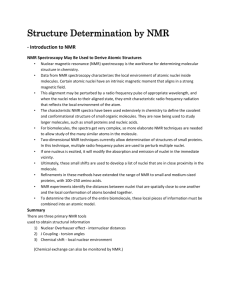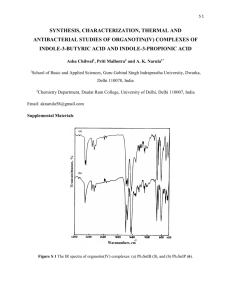Liquid-solid interface characterization of organometals grafted to
advertisement
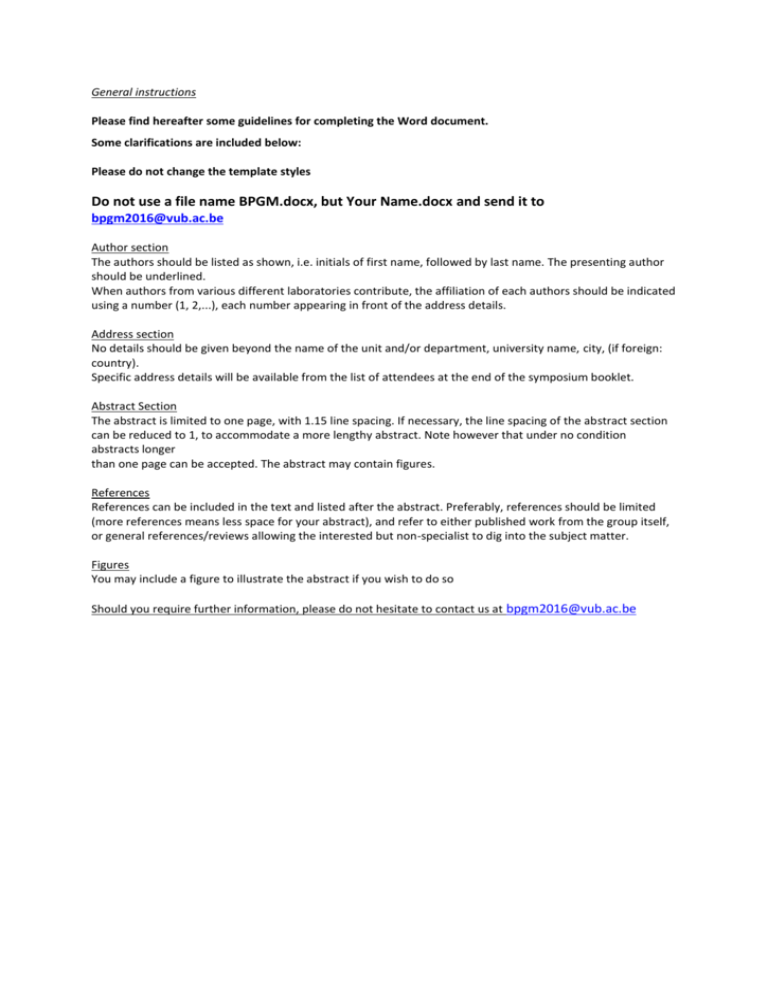
General instructions Please find hereafter some guidelines for completing the Word document. Some clarifications are included below: Please do not change the template styles Do not use a file name BPGM.docx, but Your Name.docx and send it to bpgm2016@vub.ac.be Author section The authors should be listed as shown, i.e. initials of first name, followed by last name. The presenting author should be underlined. When authors from various different laboratories contribute, the affiliation of each authors should be indicated using a number (1, 2,...), each number appearing in front of the address details. Address section No details should be given beyond the name of the unit and/or department, university name, city, (if foreign: country). Specific address details will be available from the list of attendees at the end of the symposium booklet. Abstract Section The abstract is limited to one page, with 1.15 line spacing. If necessary, the line spacing of the abstract section can be reduced to 1, to accommodate a more lengthy abstract. Note however that under no condition abstracts longer than one page can be accepted. The abstract may contain figures. References References can be included in the text and listed after the abstract. Preferably, references should be limited (more references means less space for your abstract), and refer to either published work from the group itself, or general references/reviews allowing the interested but non-specialist to dig into the subject matter. Figures You may include a figure to illustrate the abstract if you wish to do so Should you require further information, please do not hesitate to contact us at bpgm2016@vub.ac.be Liquid-solid interface characterization of organometals grafted to cross-linked polymers using high-resolution Magic Angle Spinning NMR spectroscopy J. C. Martins1, M. Biesemans2, F. A. G. Mercier2, I. Verbruggen2, R. Willem2, J.-M. Wieruszeski3 and G. Lippens3 1 NMR and Structure Analysis Unit, Vakgroep Organische Chemie, Universiteit Gent HNMR Centre and POSC, Vrije Universiteit Brussel. 3 UMR 8525, Laboratoire RMN, Institut Pasteur et Institut de Biologie de Lille, France. 2 The structural characterization of organotin compounds that are grafted on insoluble cross-linked polymers has necessarily been limited to elemental analysis, infra-red spectroscopy and, in a few instances, solid state NMR spectroscopy. This has been an important bottleneck in the development of such systems, intended for use as heteregeneous catalysts, or as functionalised polymers for application in organic chemistry. We have addressed this problem with high-resolution magic angle spinning (hr-MAS) NMR spectroscopy. This technique borrows the magic angle spinning technique, well-known from solid-state NMR, to narrow down resonance lines to nearly liquid like line-widths, such that 1D and 2D high resolution NMR spectra may be applied for the detailed structure elucidation of the grafted compound in the solvent swollen polymer matrix. The potential of this technique is demonstrated through the structural characterisation of various organotins grafted on divinylbenzene cross-linked polystyrene by means of a suitable linker. Suitable conditions for the application of hr-MAS NMR spectroscopy were identified using the 1H resonance line-widths of the grafted organotin moiety following swelling of the functionalised beads in 8 representative solvents. Following this, we used the presence of clearly identifiable tin coupling patterns in both the 1D 13C and 2D 1H-13C HSQC spectra, and the incorporation of 119Sn chemical shift and connectivity information from hr-MAS 1D 119Sn and 2D 1H-119Sn HMQC spectra, to provide an unprecedented level of characterization of grafted organotins directly at the solid/liquid interface. In addition, the use of hr-MAS 119Sn NMR for reaction monitoring, impurity detection and quantification and assessing coordination extension reveals its promising potential as a novel tool for investigating polymer grafted organotin compounds. The approach described here should be sufficiently general to be extended to a variety of other nuclei of interest in polymer supported organometallic chemistry. 1. Aaa, A., Bbb, B., Ccc, C. and Zzz, X. Y. J. Am. Chem. Soc. 2000, 115, 0123-4567. 2. others….
